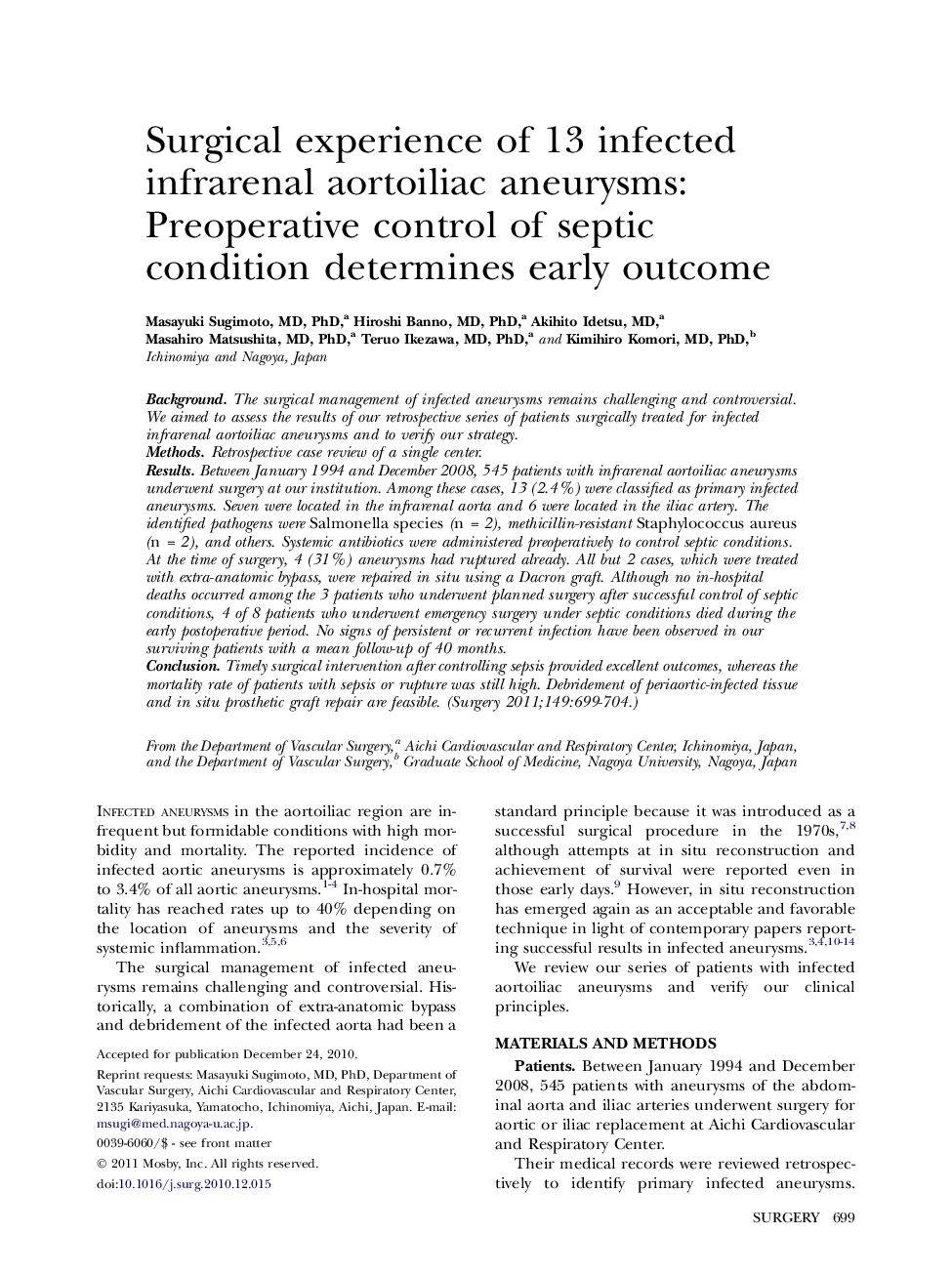| Article ID | Journal | Published Year | Pages | File Type |
|---|---|---|---|---|
| 4308040 | Surgery | 2011 | 6 Pages |
BackgroundThe surgical management of infected aneurysms remains challenging and controversial. We aimed to assess the results of our retrospective series of patients surgically treated for infected infrarenal aortoiliac aneurysms and to verify our strategy.MethodsRetrospective case review of a single center.ResultsBetween January 1994 and December 2008, 545 patients with infrarenal aortoiliac aneurysms underwent surgery at our institution. Among these cases, 13 (2.4%) were classified as primary infected aneurysms. Seven were located in the infrarenal aorta and 6 were located in the iliac artery. The identified pathogens were Salmonella species (n = 2), methicillin-resistant Staphylococcus aureus (n = 2), and others. Systemic antibiotics were administered preoperatively to control septic conditions. At the time of surgery, 4 (31%) aneurysms had ruptured already. All but 2 cases, which were treated with extra-anatomic bypass, were repaired in situ using a Dacron graft. Although no in-hospital deaths occurred among the 3 patients who underwent planned surgery after successful control of septic conditions, 4 of 8 patients who underwent emergency surgery under septic conditions died during the early postoperative period. No signs of persistent or recurrent infection have been observed in our surviving patients with a mean follow-up of 40 months.ConclusionTimely surgical intervention after controlling sepsis provided excellent outcomes, whereas the mortality rate of patients with sepsis or rupture was still high. Debridement of periaortic-infected tissue and in situ prosthetic graft repair are feasible.
